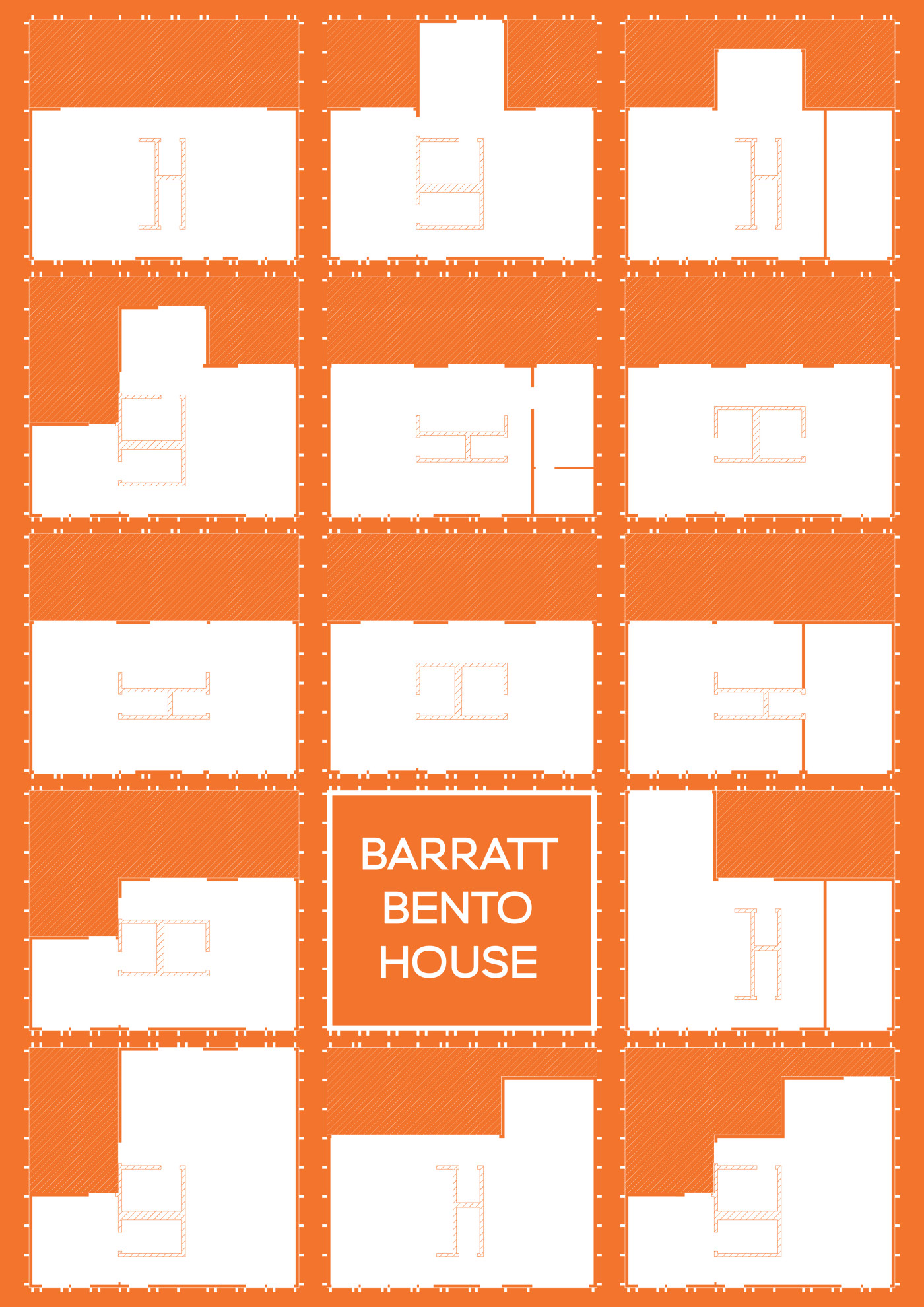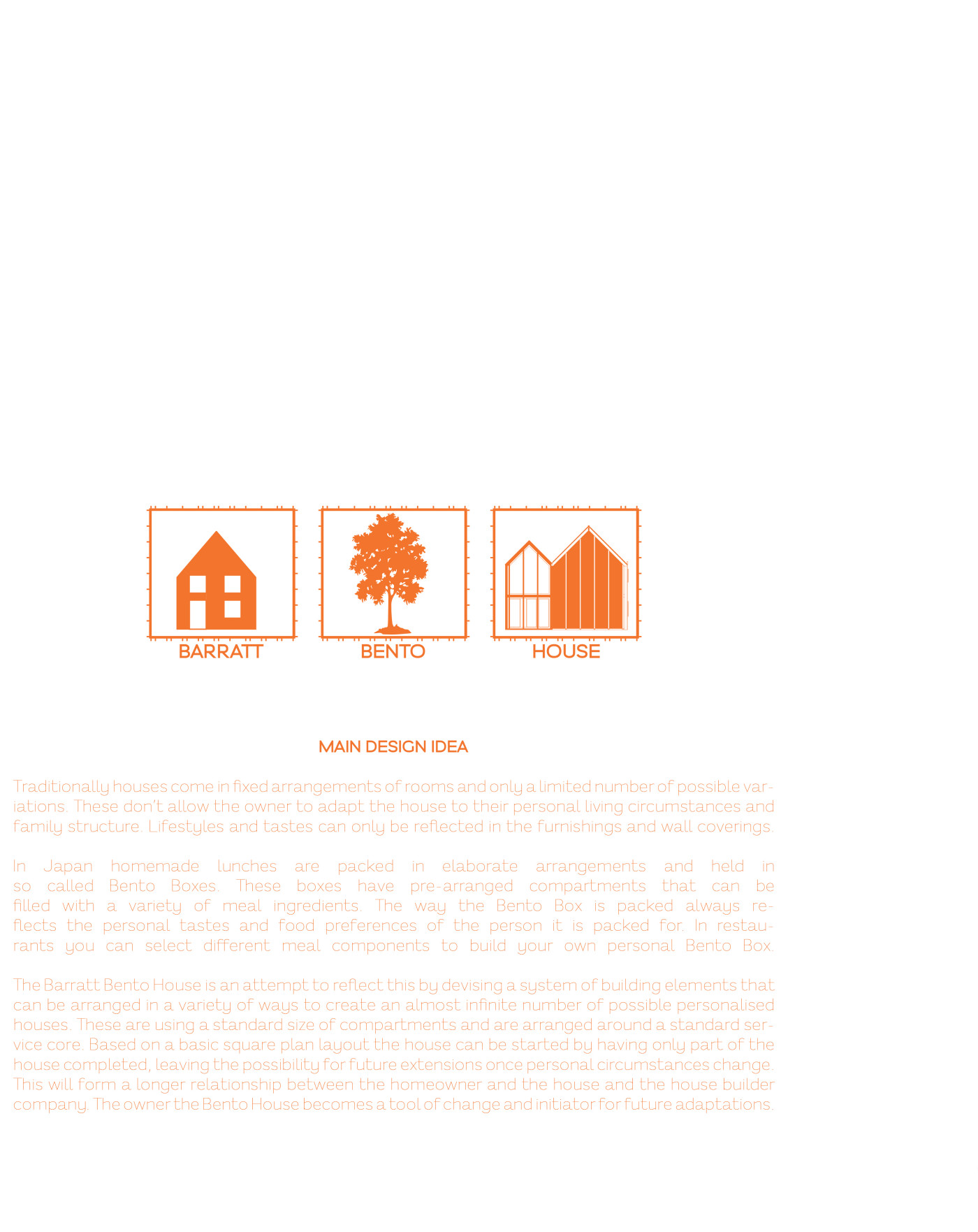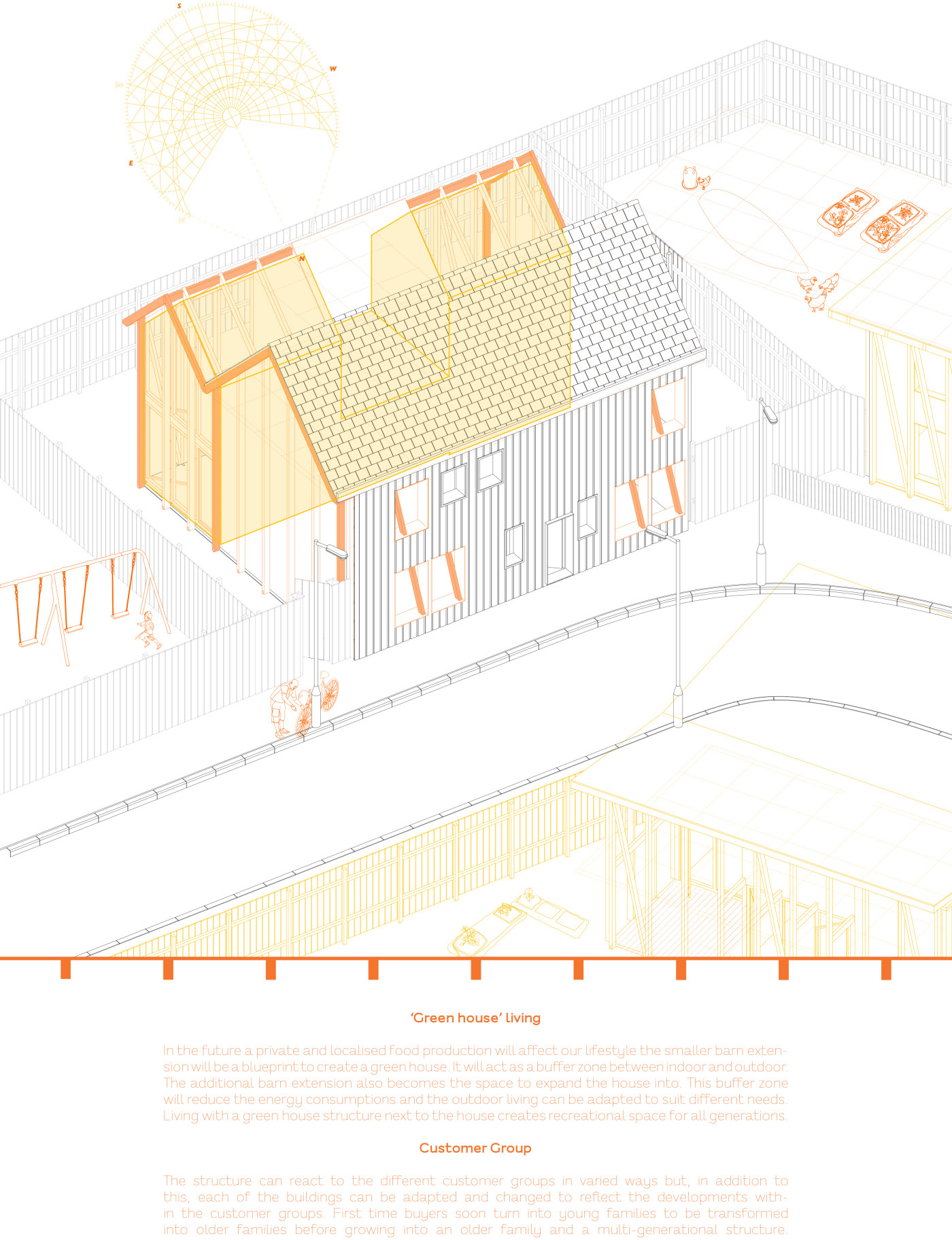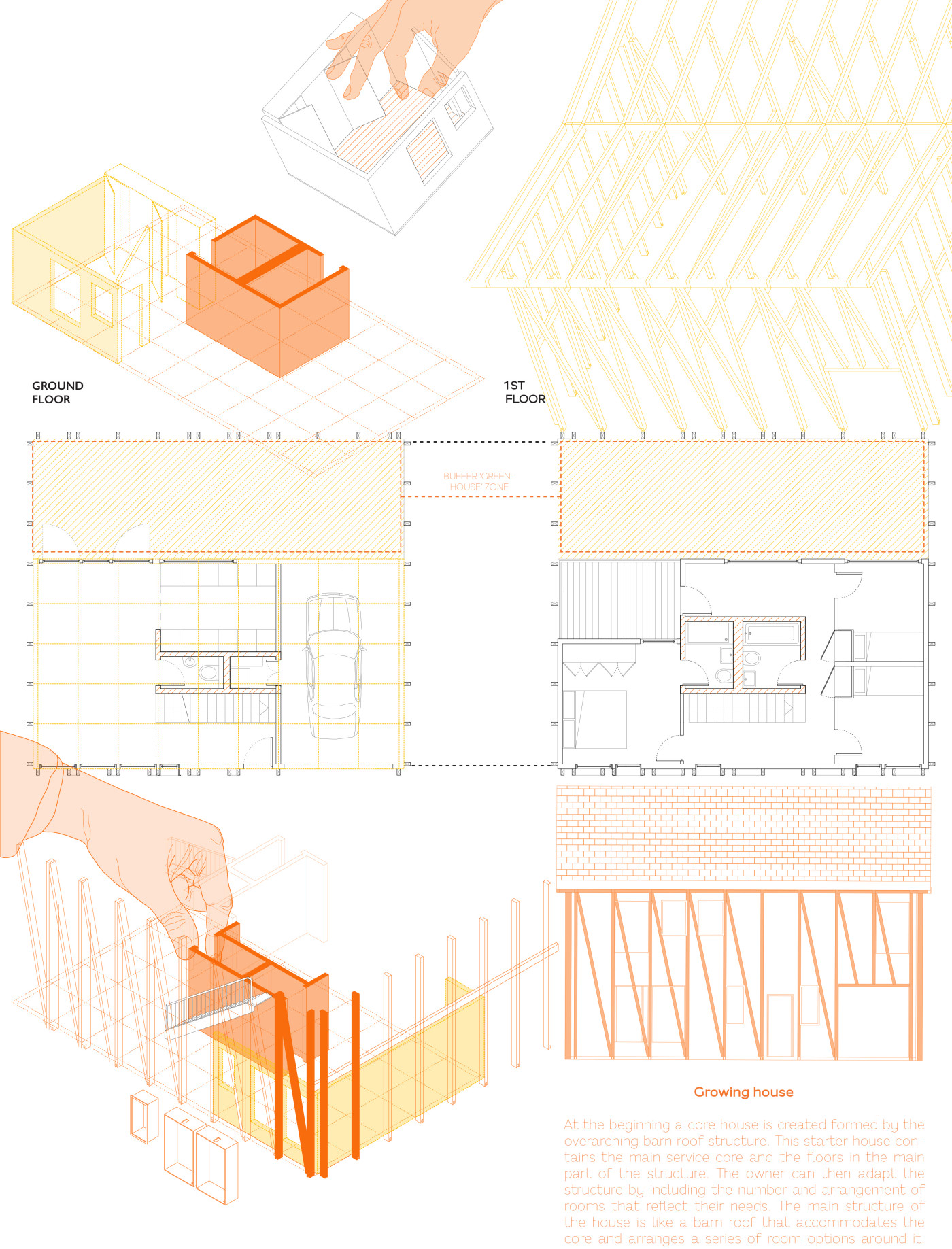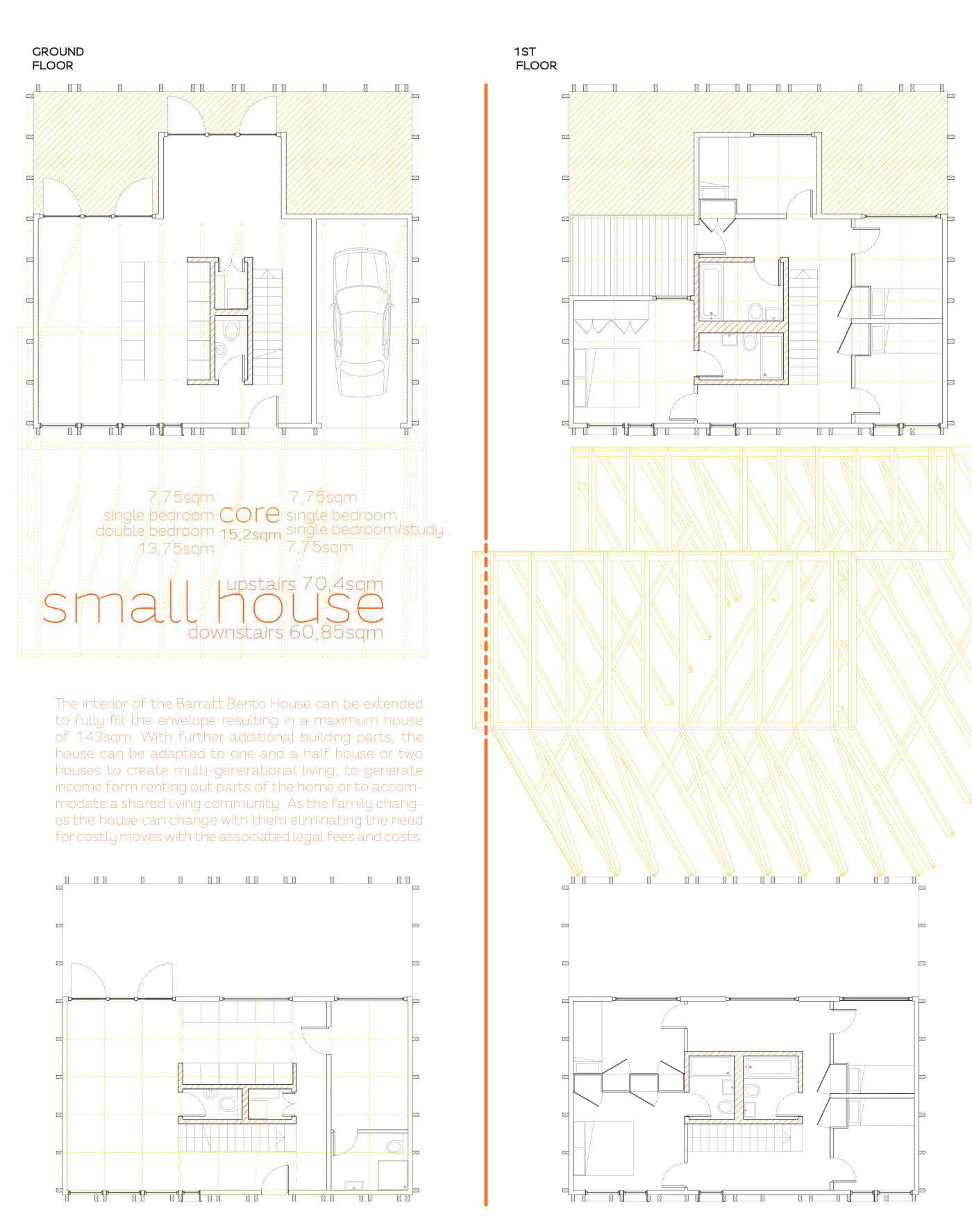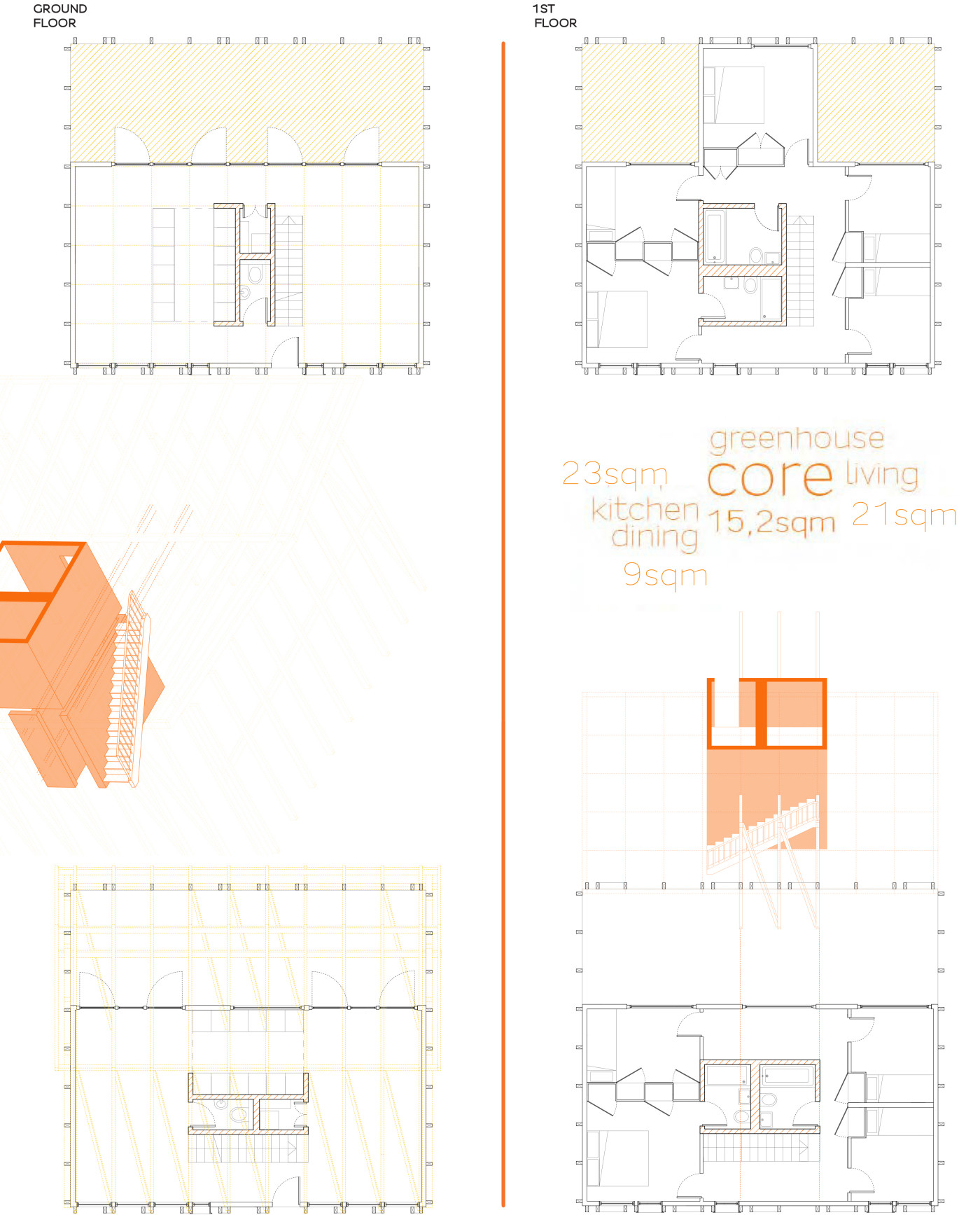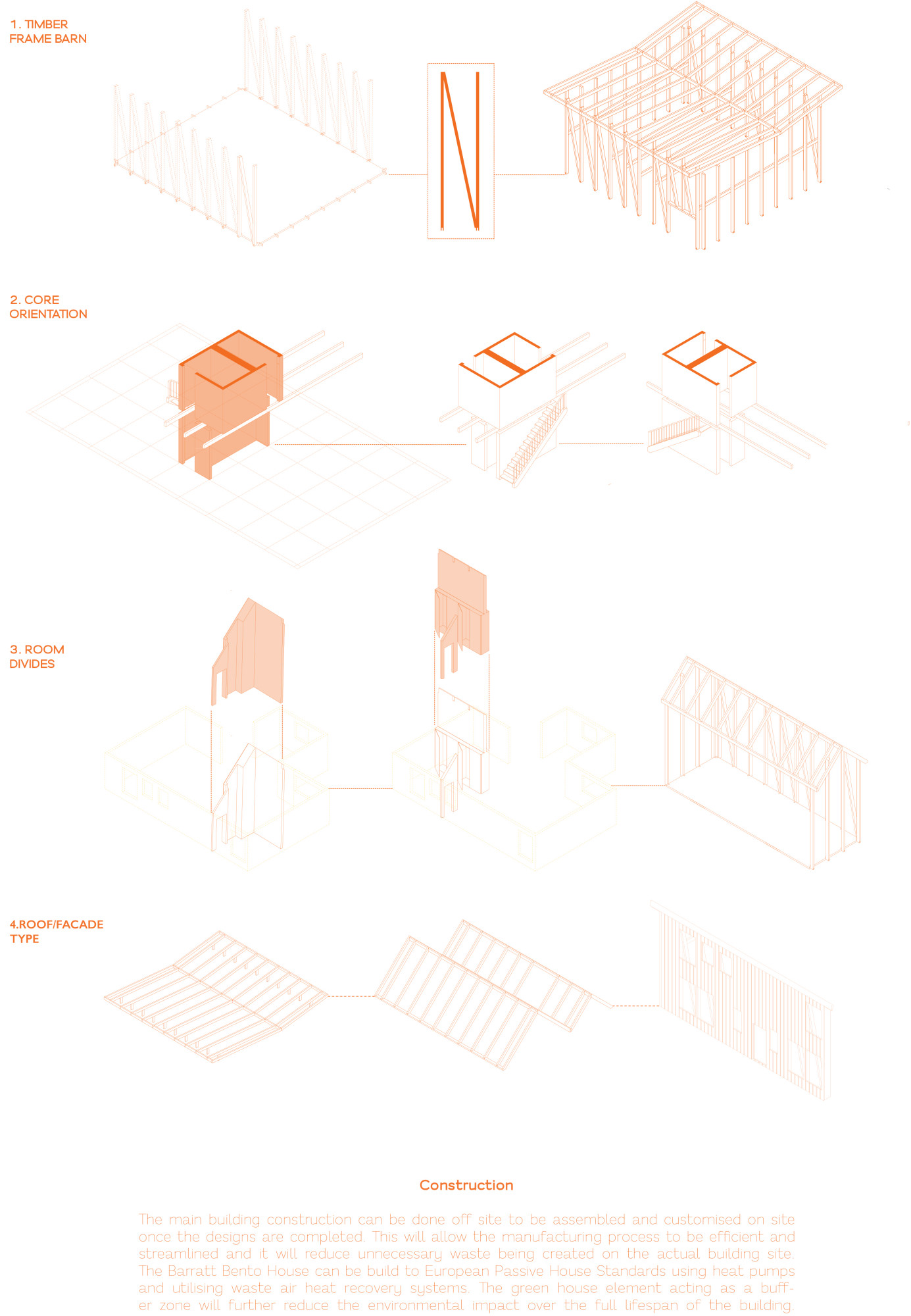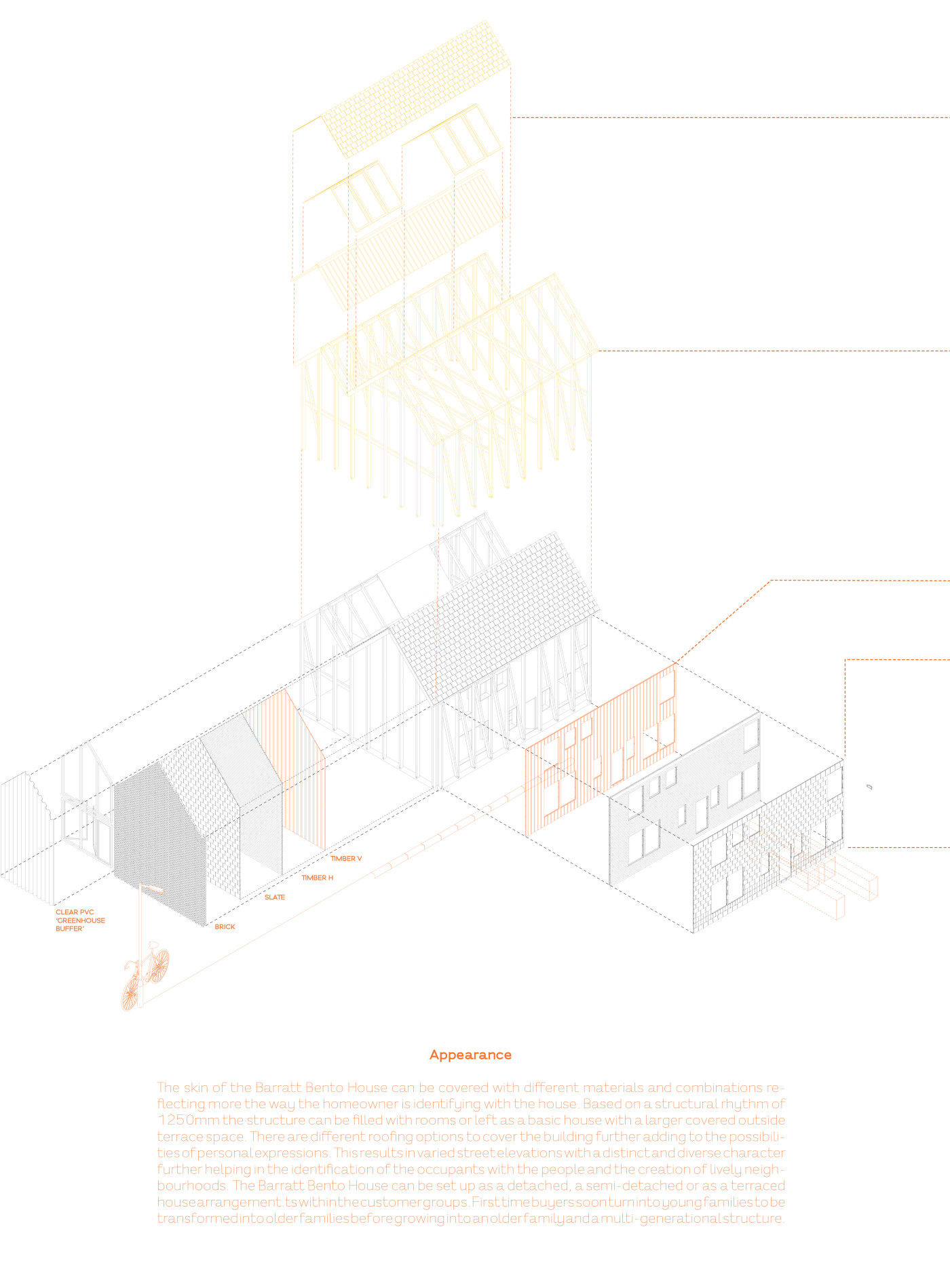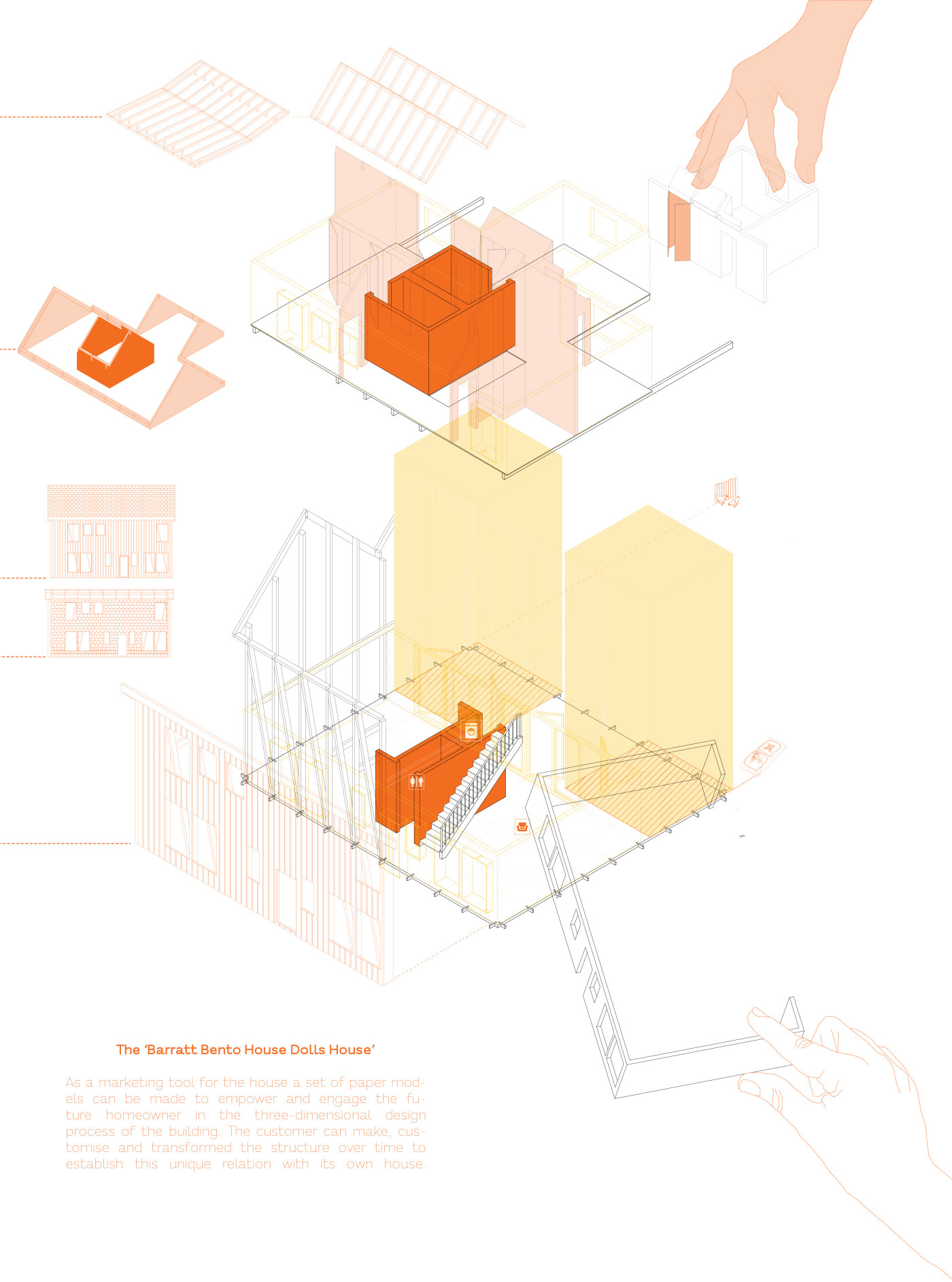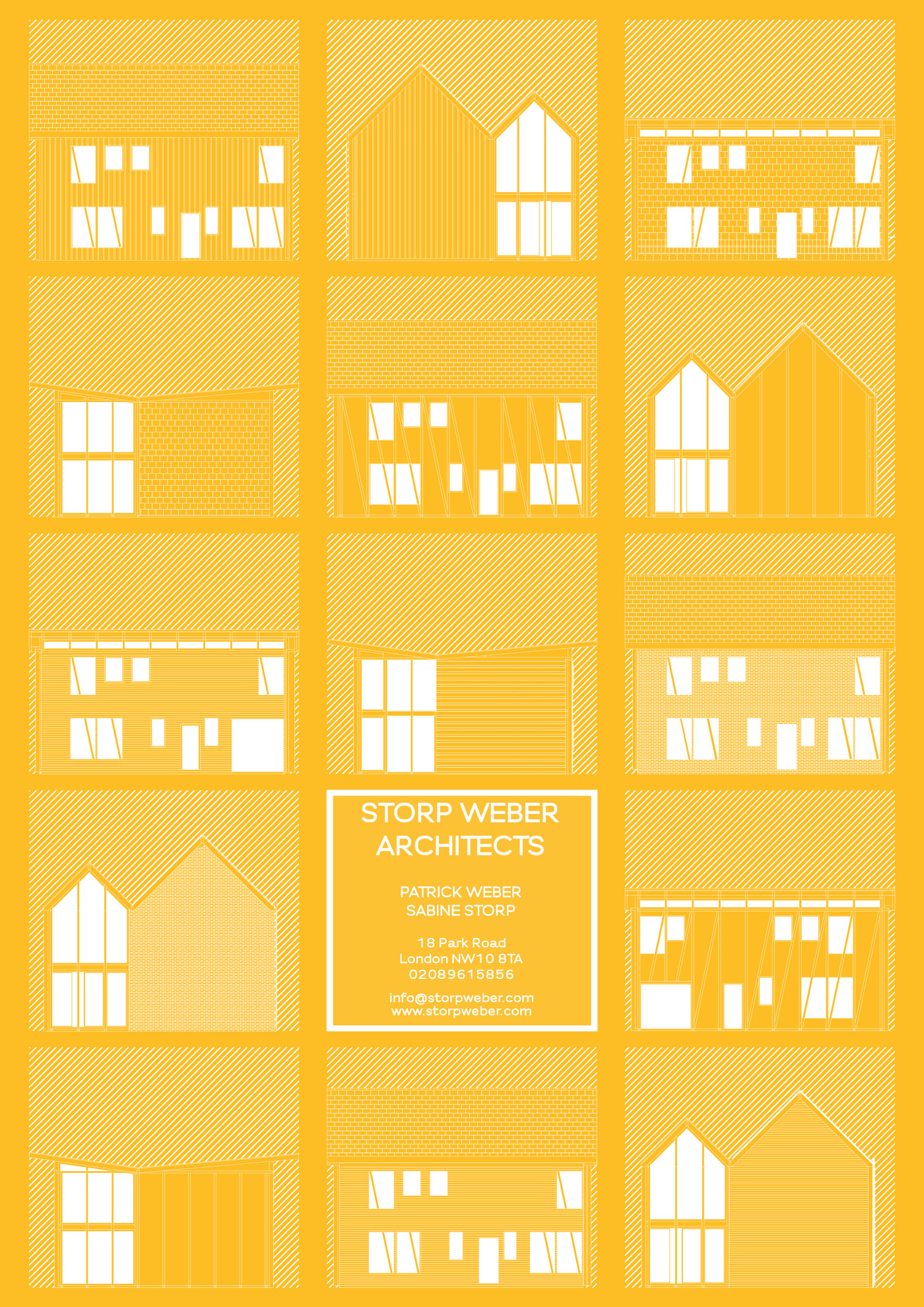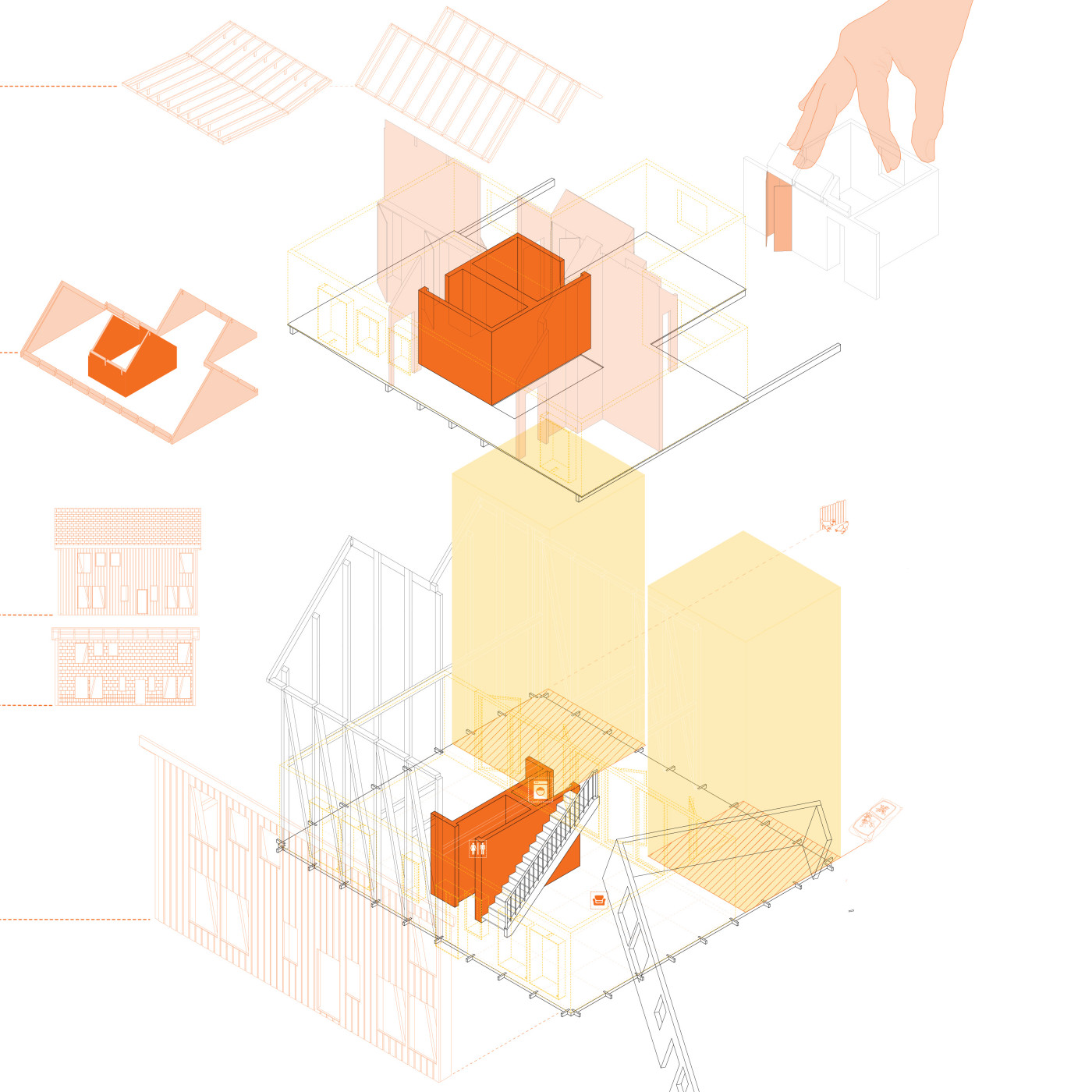
Barratt Bento House
Main design idea:
Traditionally houses come in fixed arrangements of rooms and only a limited number of possible variations. These don’t allow the owner to adapt the house to their personal living circumstances and family structure. Lifestyles and tastes can only be reflected in the furnishings and wall coverings.
In Japan homemade lunches are packed in elaborate arrangements and held in so called Bento Boxes. These boxes have pre-arranged compartments that can be filled with a variety of meal ingredients. The way the Bento Box is packed always reflects the personal tastes and food preferences of the person it is packed for. In restaurants you can select different meal components to build your own personal Bento Box.
The Barratt Bento House is an attempt to reflect this by devising a system of building elements that can be arranged in a variety of ways to create an almost infinite number of possible personalised houses. These are using a standard size of compartments and are arranged around a standard service core. Based on a basic square plan layout the house can be started by having only part of the house completed, leaving the possibility for future extensions once personal circumstances change. This will form a longer relationship between the homeowner and the house and the house builder company. The owner the Bento House becomes a tool of change and initiator for future adaptations.
Growing house:
At the beginning a core house is created formed by the overarching barn roof structure. This starter house contains the main service core and the floors in the main part of the structure. The owner can then adapt the structure by including the number and arrangement of rooms that reflect their needs. The main structure of the house is like a barn roof that accommodates the core and arranges a series of room options around it. The interior of the Barratt Bento House can be extended to fully fill the envelope resulting in a maximum house of 143sqm. With further additional building parts, the house can be adapted to one and a half house or two houses to create multi-generational living, to generate income form renting out parts of the home or to accommodate a shared living community.
As the family changes the house can change with them eliminating the need for costly moves with the associated legal fees and costs.
Appearance:
The skin of the Barratt Bento House can be covered with different materials and combinations reflecting more the way the homeowner is identifying with the house. Based on a structural rhythm of 1250mm the structure can be filled with rooms or left as a basic house with a larger covered outside terrace space. There are different roofing options to cover the building further adding to the possibilities of personal expressions. This results in varied street elevations with a distinct and diverse character further helping in the identification of the occupants with the people and the creation of lively neighbourhoods. The Barratt Bento House can be set up as a detached, a semi-detached or as a terraced house arrangement.
‘Green house’ living
In the future a private and localised food production will affect our lifestyle the smaller barn extension will be a blueprint to create a green house. It will act as a buffer zone between indoor and outdoor. The additional barn extension also becomes the space to expand the house into. This buffer zone will reduce the energy consumptions and the outdoor living can be adapted to suit different needs. Living with a green house structure next to the house creates recreational space for all generations.
Customer Groups:
The structure can react to the different customer groups in varied ways but, in addition to this, each of the buildings can be adapted and changed to reflect the developments within the customer groups. First time buyers soon turn into young families to be transformed into older families before growing into an older family and a multi-generational structure.
Construction:
The main building construction can be done off site to be assembled and customised on site once the designs are completed. This will allow the manufacturing process to be efficient and streamlined and it will reduce unnecessary waste being created on the actual building site. The Barratt Bento House can be build to European Passive House Standards using heat pumps and utilising waste air heat recovery systems. The green house element acting as a buffer zone will further reduce the environmental impact over the full lifespan of the building.
The ‘Barratt Bento House Dolls House’:
As a marketing tool for the house a set of paper models can be made to empower and engage the future homeowner in the three-dimensional design process of the building. The customer can make, customise and transformed the structure over time to establish this unique relation with its own house.
Project Team:
Sabine Storp
Patrick Weber
Oliver Parkinson
